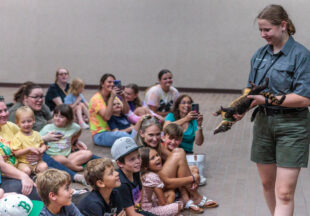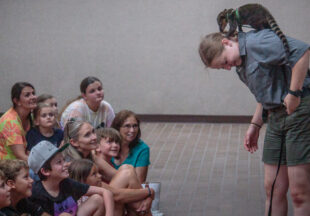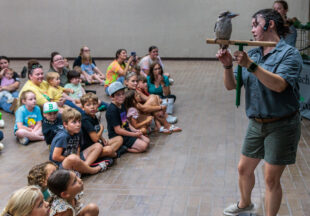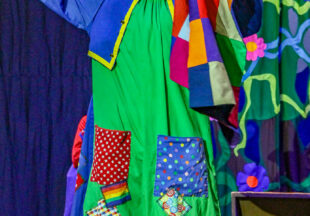Breckenridge to see partial solar eclipse Saturday, Oct. 14
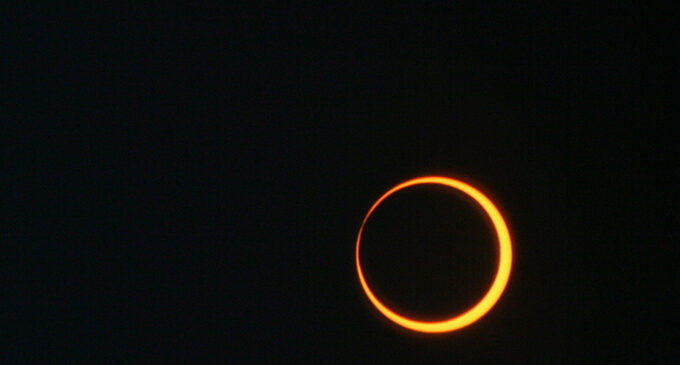
By Carla McKeown/Breckenridge Texan
EDITOR’S NOTE: Do not look directly into the sun at any time, even during Saturday’s partial solar eclipse. Special glasses for viewing the eclipse are available locally; additionally, there are other methods, described below, that you can use to “see” the eclipse.
Breckenridge to see about 90% obscurity
At a little after 10:20 a.m. on Saturday, Oct. 14, a partial solar eclipse will begin and will be visible in Breckenridge. The eclipse, known as an “annular eclipse,” will reach its maximum state just before 11:50 a.m., and by 1:25 p.m., the event will be over.
According to the National Aeronautics and Space Association, aka NASA, the eclipse will be an annular solar eclipse, which happens when the moon passes between the sun and Earth while it is at its farthest point from Earth. Because the moon is farther away from Earth, it appears smaller than the sun and does not completely cover the star. This type of an eclipse is often referred to as a “ring of fire” because the moon is farther away from Earth, it appears smaller and does not block the entire face of the sun. As a result, the moon appears like a dark disk on top of a larger, bright disk. (See the NASA image of an annular solar eclipse above.)
Because of Breckenridge’s location, the sun will be about 90% obscured by the moon during the maximum portion of the eclipse. That means that, in Breckenridge, the sun will look more like a very narrow crescent moon than a “ring of fire.” (This can’t be said too many times…no matter how obscured the sun looks on Oct. 14, do not look directly at the sun without proper solar eclipse glasses.)
Some areas of Texas, such as Midland, San Angelo, San Antonio and Corpus Christi, will be able to see the complete eclipse — the “ring of fire.” What you can see during an annular eclipse depends on the weather and the location from which you view it, according to NASA. Everyone in the contiguous United States, plus parts of Alaska, who are outside the path of annular eclipse — such as those in Breckenridge — will experience a partial solar eclipse, where the moon only partially covers the sun. Click here to see a map of the path of the Oct. 14, 2023, eclipse.
Because the sun is never completely covered, observers must wear proper eye protection at all times while watching an annular eclipse, NASA explains.
Solar Eclipse Glasses Available in Breckenridge
Earlier this week, solar eclipse glasses were available at the Walmart store in Breckenridge; if you’d like to view the eclipse, check to see if they’re still available. At that time, they were located at the end of one of the toy aisles. The glasses, pictured below, are thin cardboard frames with very dark film for lenses. They cost a little less than $2 each at the time we bought them.
Similar glasses may be available at other places in Breckenridge, but I’ve only seen them at Walmart.
To wear the solar eclipse glasses, you will fold the arms along a pre-scored line and then put them on before looking at the sun. If you have young children with you, make sure that their solar eclipse glasses are secured and that they do not take them off. Looking at the sun during the annular eclipse can damage your eyes.
It is also important to note that NASA advises that you should not look at the sun through a camera lens, telescope, binoculars, or any other optical device, even while wearing eclipse glasses — the concentrated solar rays can burn through the filter and cause serious eye injury.

These solar eclipse glasses were available in Breckenridge earlier this week.
If you don’t have eclipse glasses, you can use an indirect viewing method, which does not involve looking directly at the sun, NASA advises. One way is to use a pinhole projector, which has a small opening (for example, a hole punched in an index card) and projects an image of the sun onto a nearby surface. With the sun at your back, you can then safely view the projected image. Do not look at the sun through the pinhole; only look at the image of the sun and the shadow of the moon on a surface, such as a sidewalk or outside table.
Any object with a hole in it, such as a kitchen colander or a slotted spoon, can be used as a pinhole projector.

The circular holes of a colander project crescent shapes onto the ground during the partial phases of a solar eclipse. The shadow shows that each of the colander’s holes is being projected as a crescent due to the moon blocking the sun. (Photo courtesy of NASA/Joy Ng)
Links with More Eclipse Information
For more information about the Oct. 14, 2023, annular solar eclipse, which will be mostly visible in Breckenridge, check out the links below:
- For an overview of the 2023 Annular Solar Eclipse from NASA: https://science.nasa.gov/eclipses/future-eclipses/eclipse-2023/
- For detailed information about what the 2023 Annular Solar Eclipse will look like in Breckenridge: https://eclipse2024.org/2023eclipse/eclipse-cities/city/39086.html
- For a simulation of what the Oct. 14 eclipse will look like in Breckenridge, including second-by-second time lapse: https://eclipse2024.org/eclipse-simulator/2023/index.html?city_id=39086
- For a map that shows the detailed path of the Oct. 14 eclipse across the United States: https://eclipse2024.org/2023eclipse/eclipse_cities/statemap.html
- For an additional map that shows the paths of both the Oct. 14, 2023, annular solar eclipse and the April 8, 2024, total solar eclipse: https://svs.gsfc.nasa.gov/5073
- For the NASA overview of next year’s total solar eclipse (April 8, 2024): https://science.nasa.gov/eclipses/future-eclipses/eclipse-2024/
Cutline, top photo: An annular solar eclipse happens when the moon passes between the sun and Earth while it is at its farthest point from Earth. Because the moon is farther away from Earth, it appears smaller than the sun and does not completely cover the sun. This creates a “ring of fire” effect in the sky. (Photo courtesy of NASA/Bill Dunford)
































